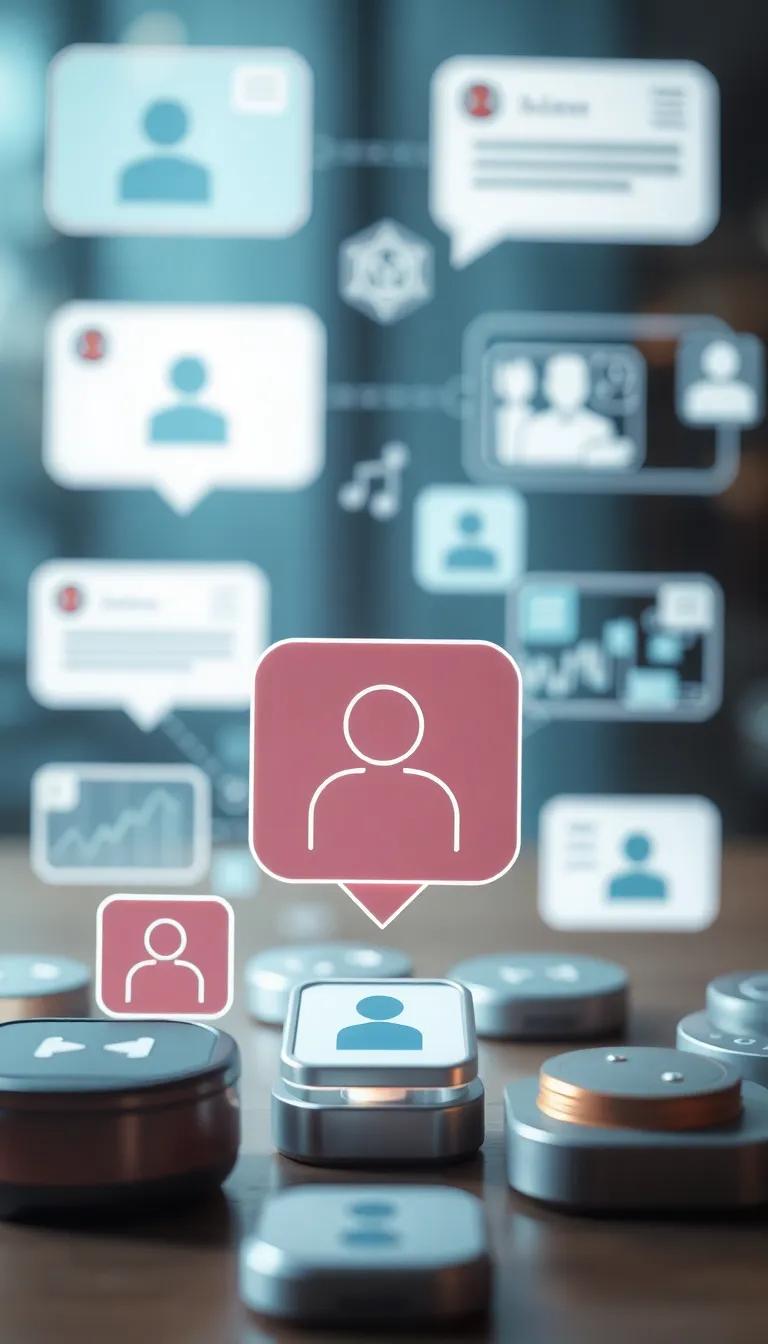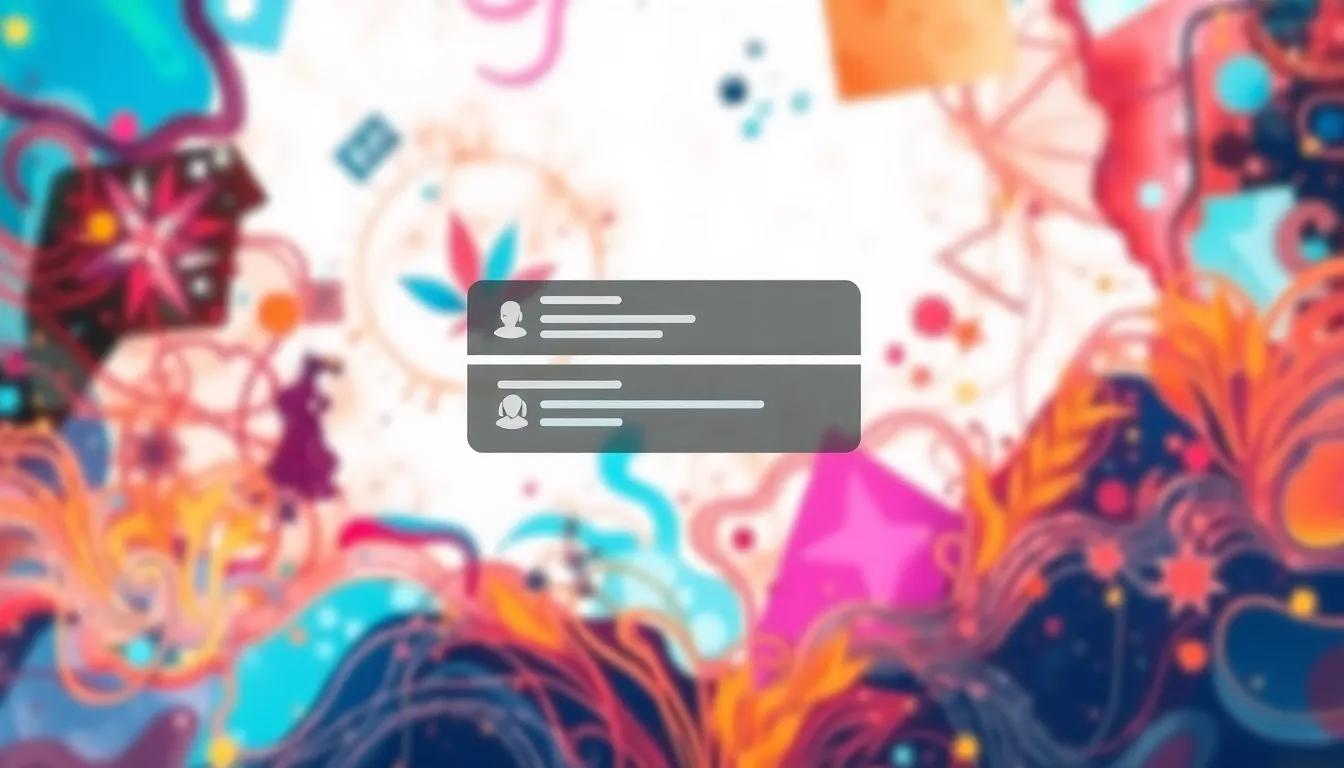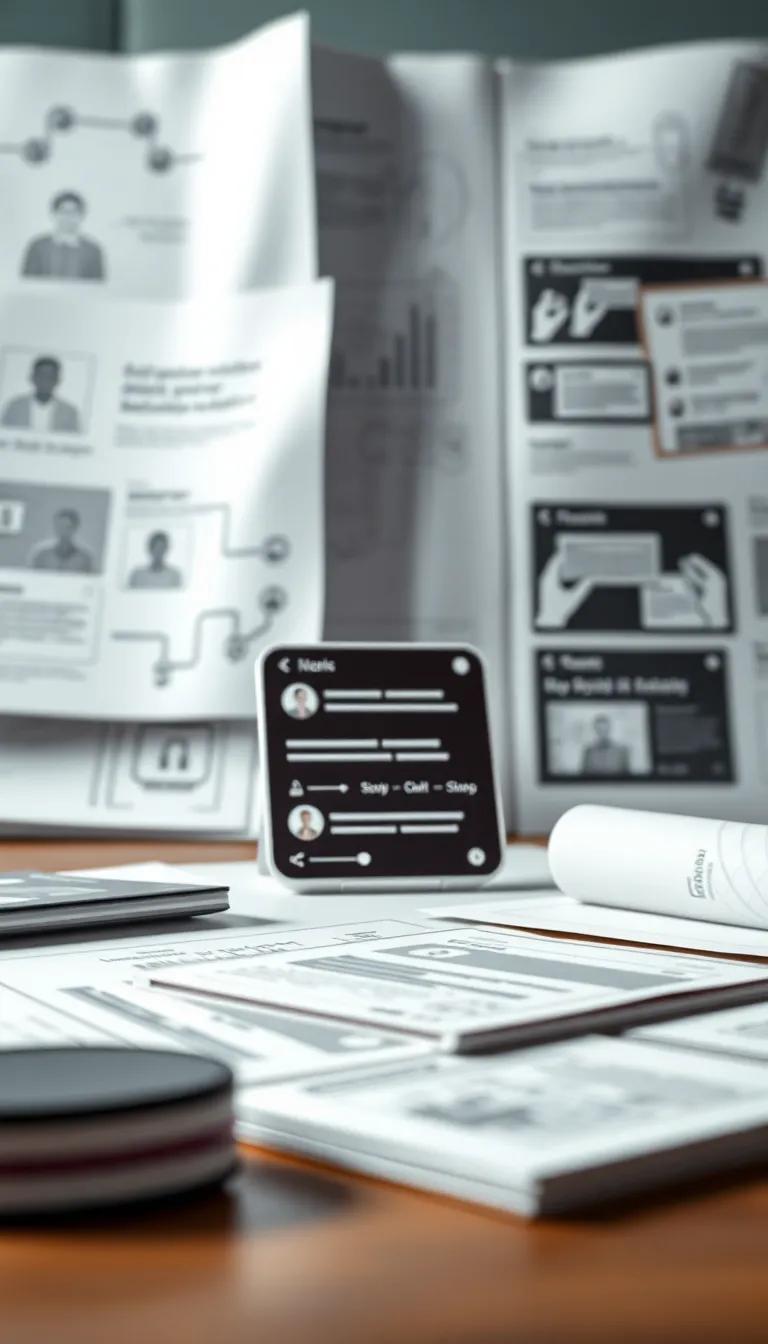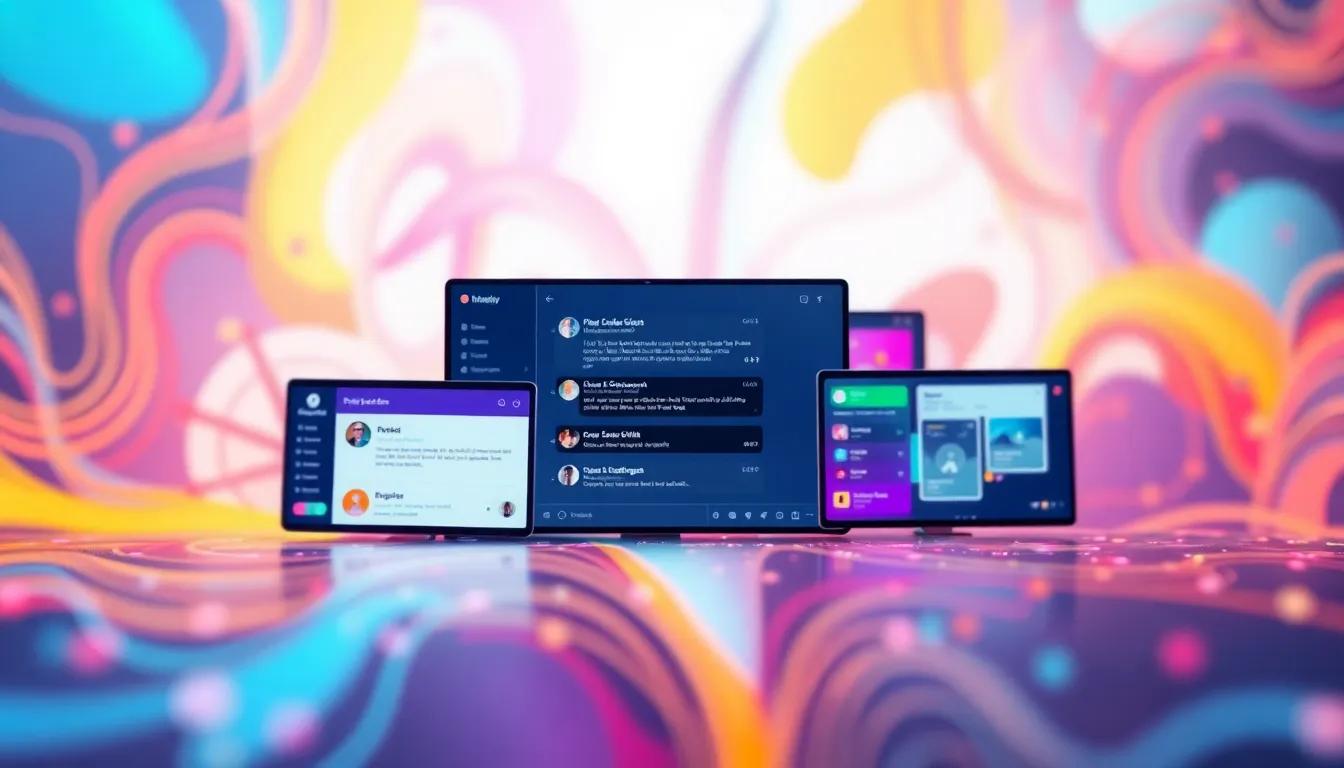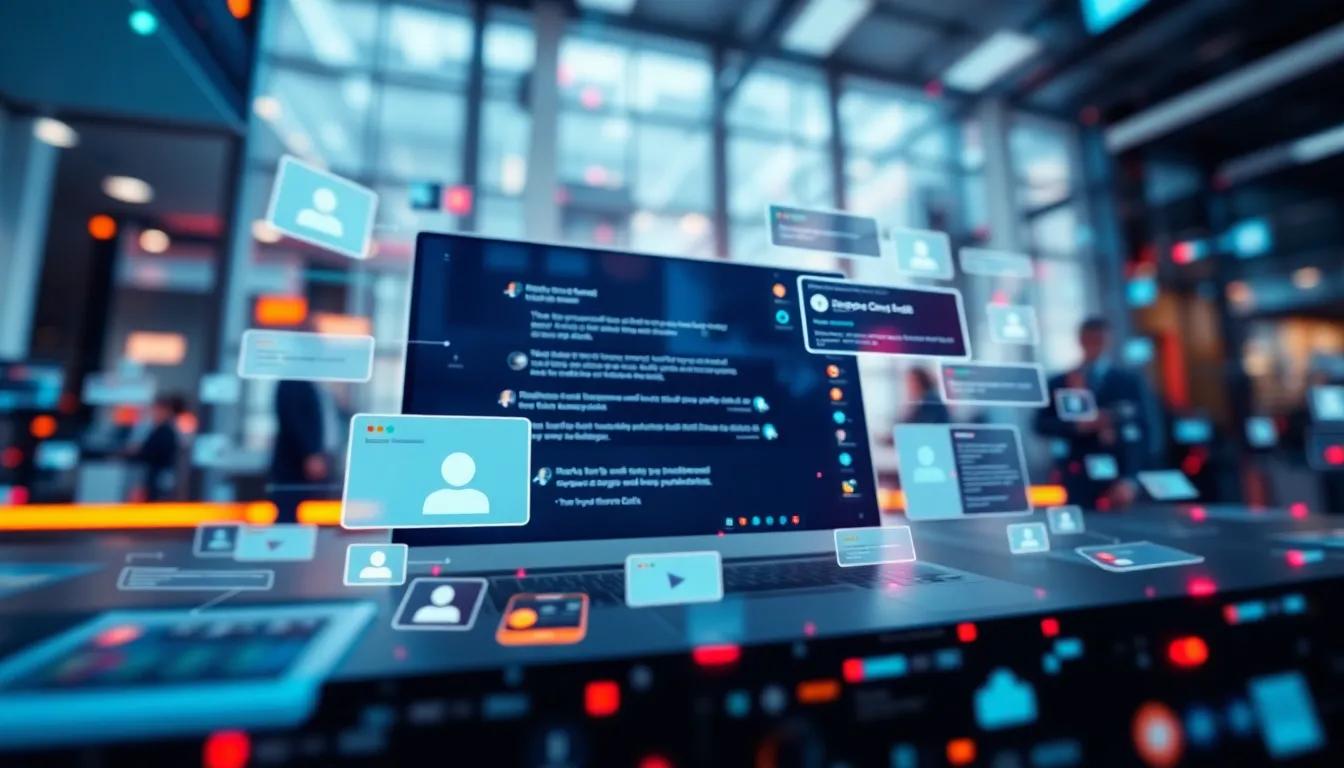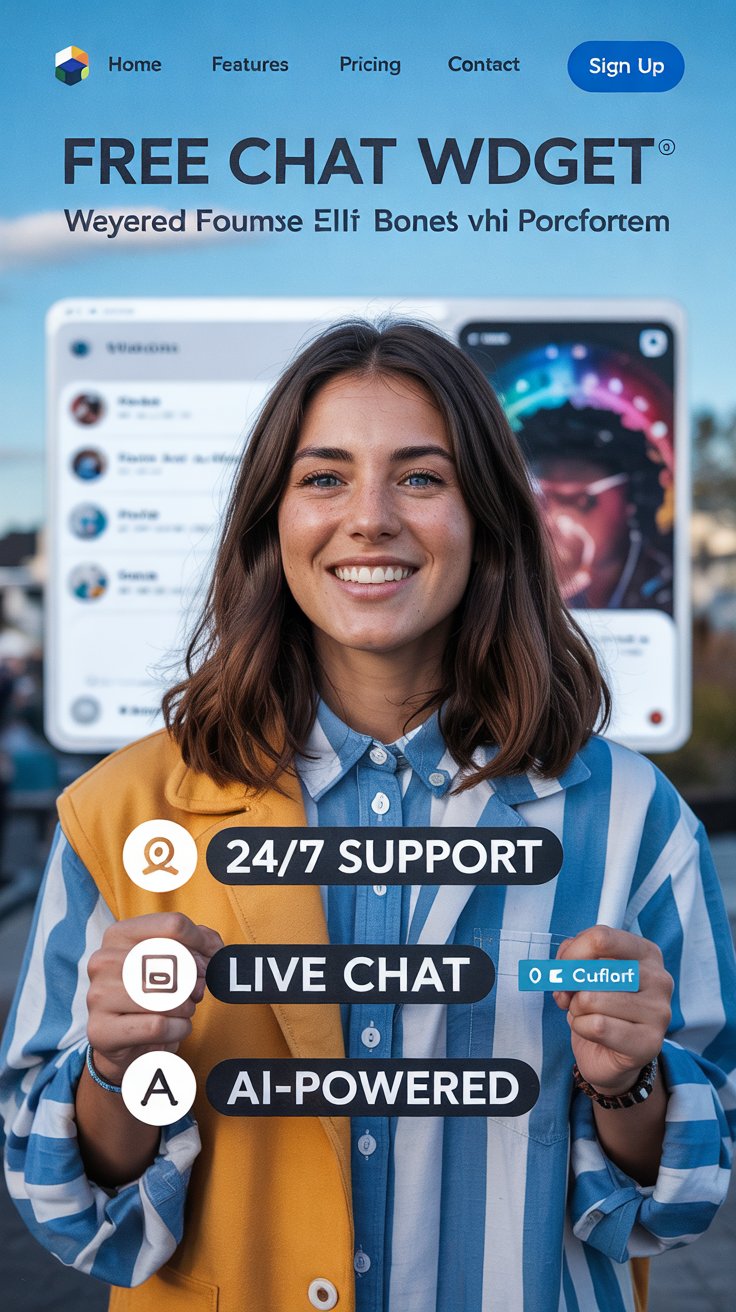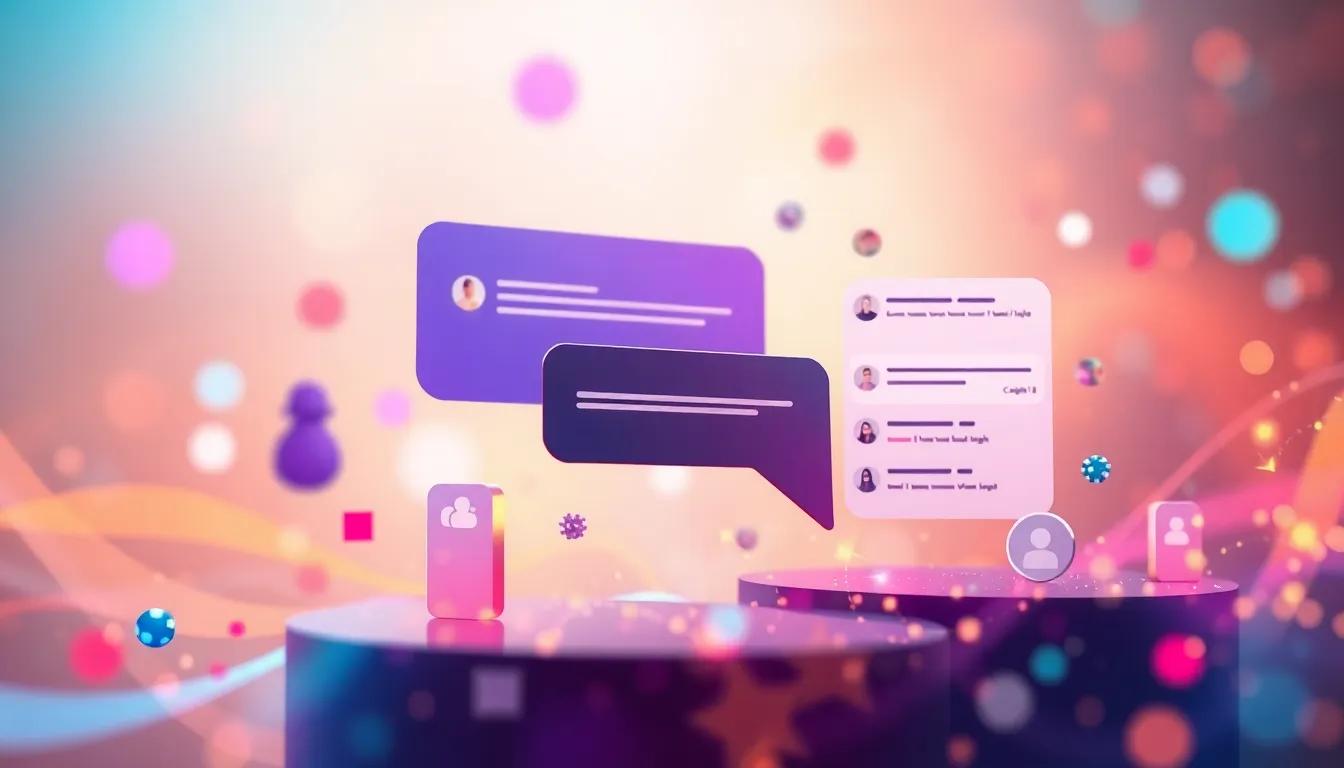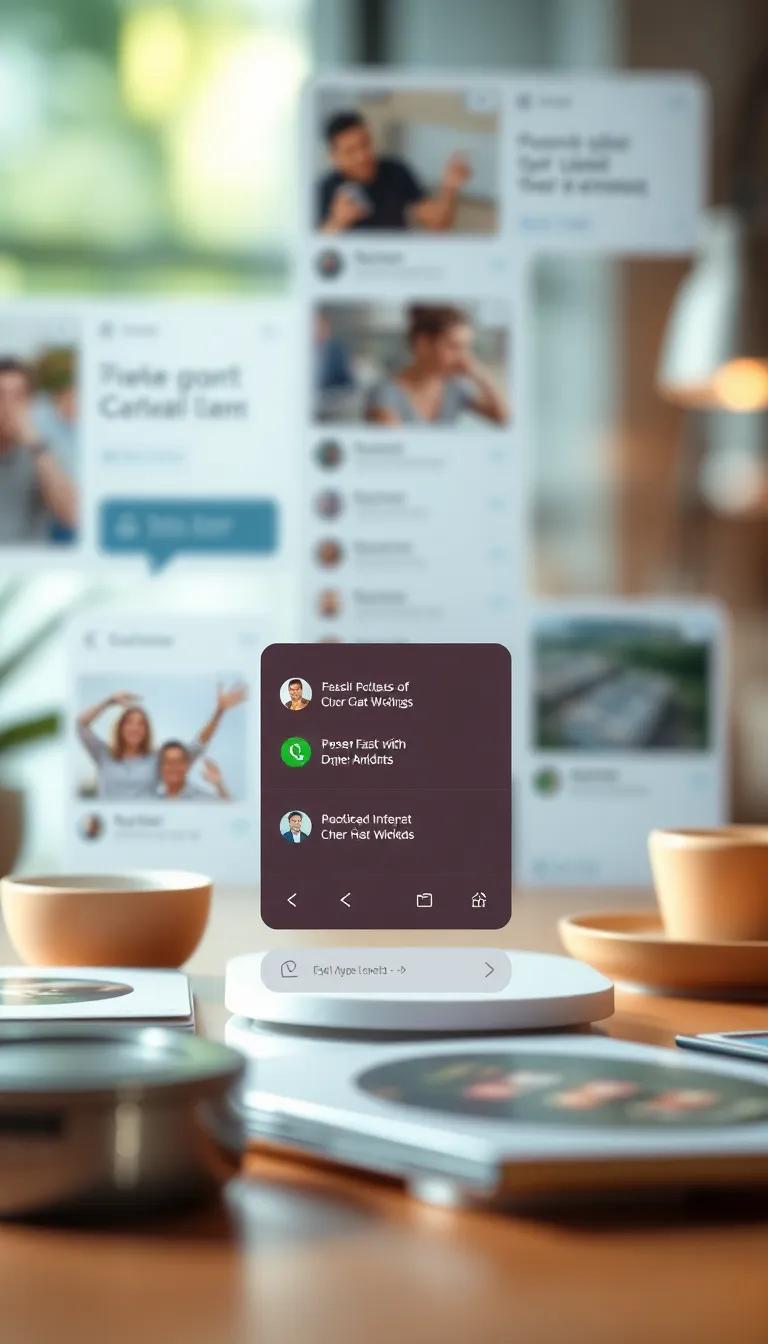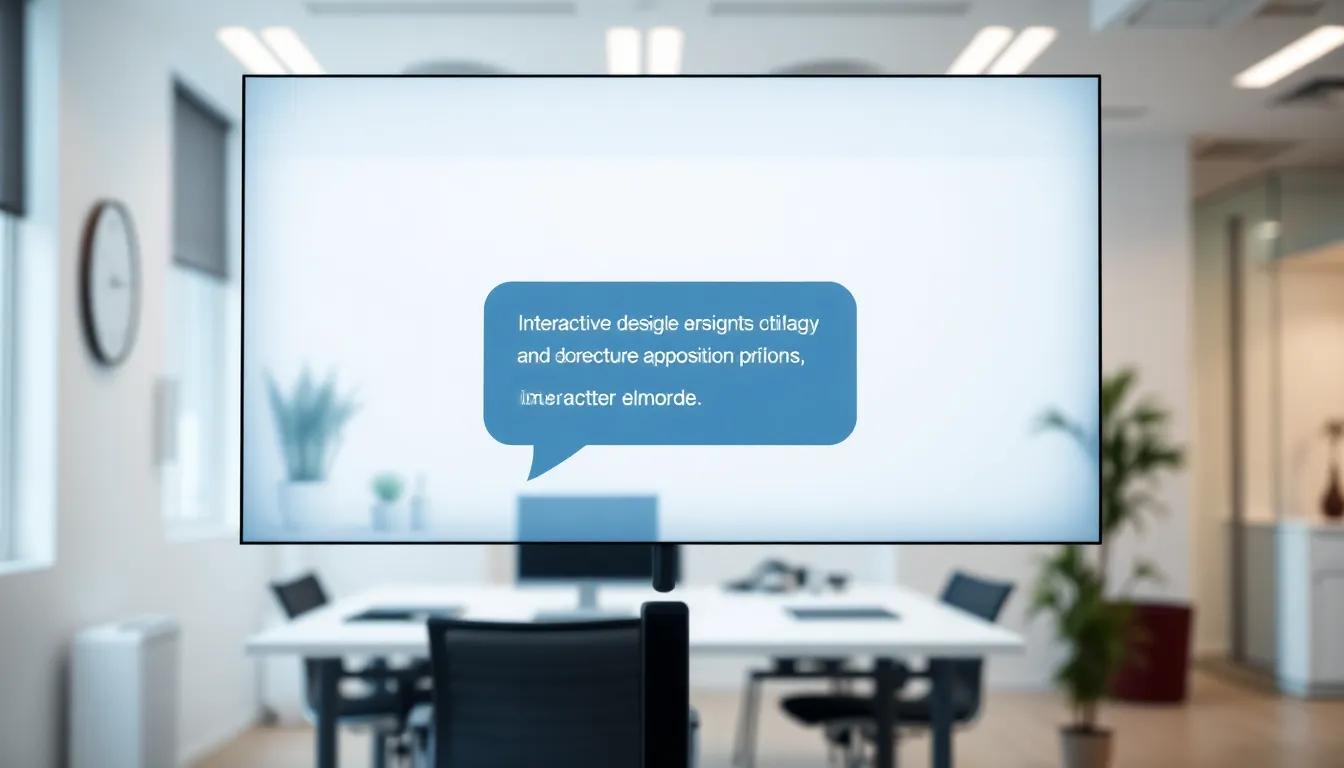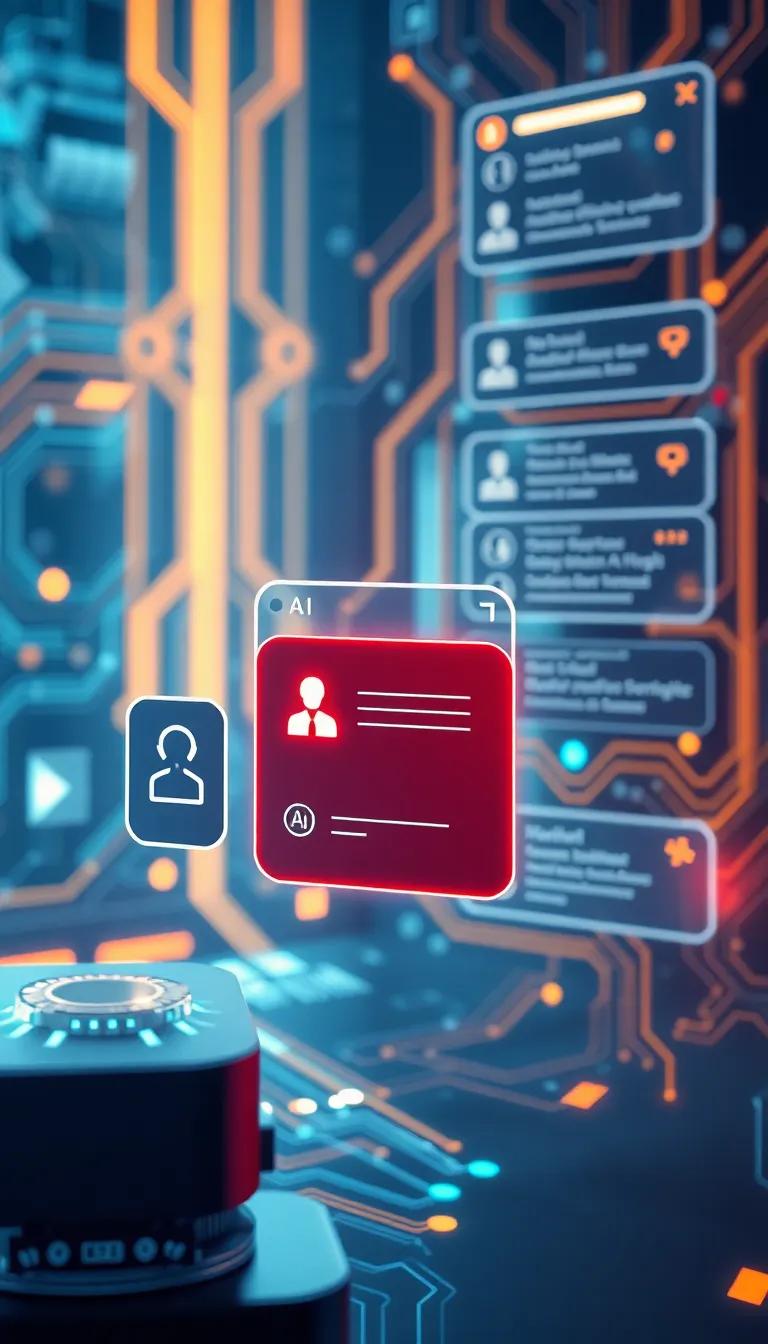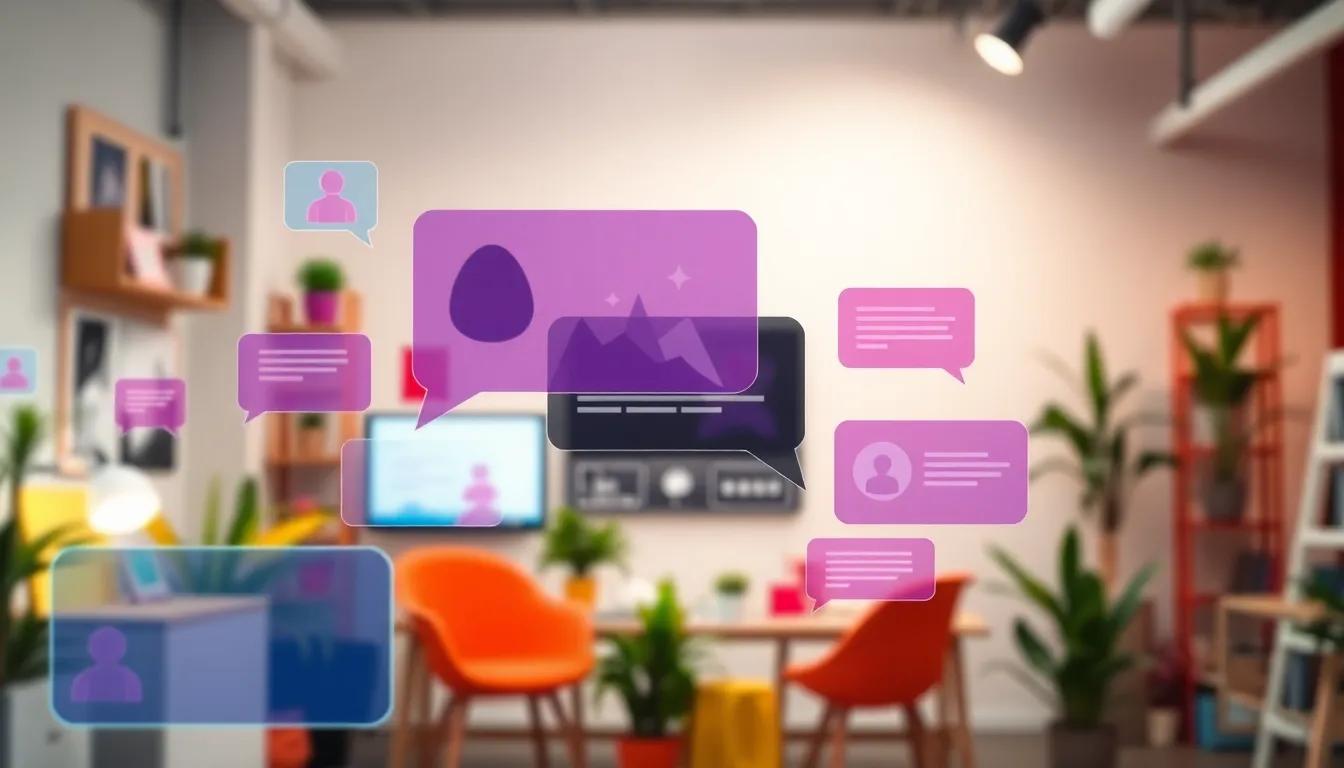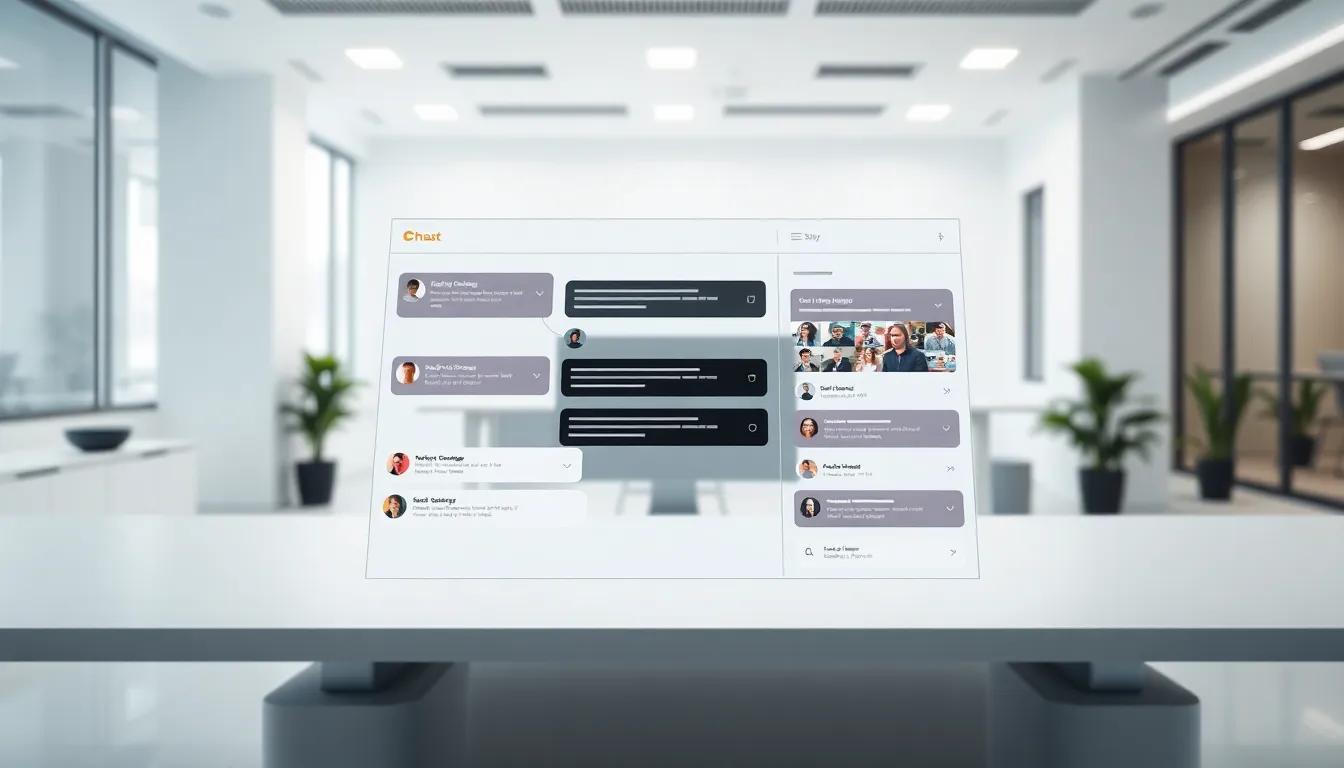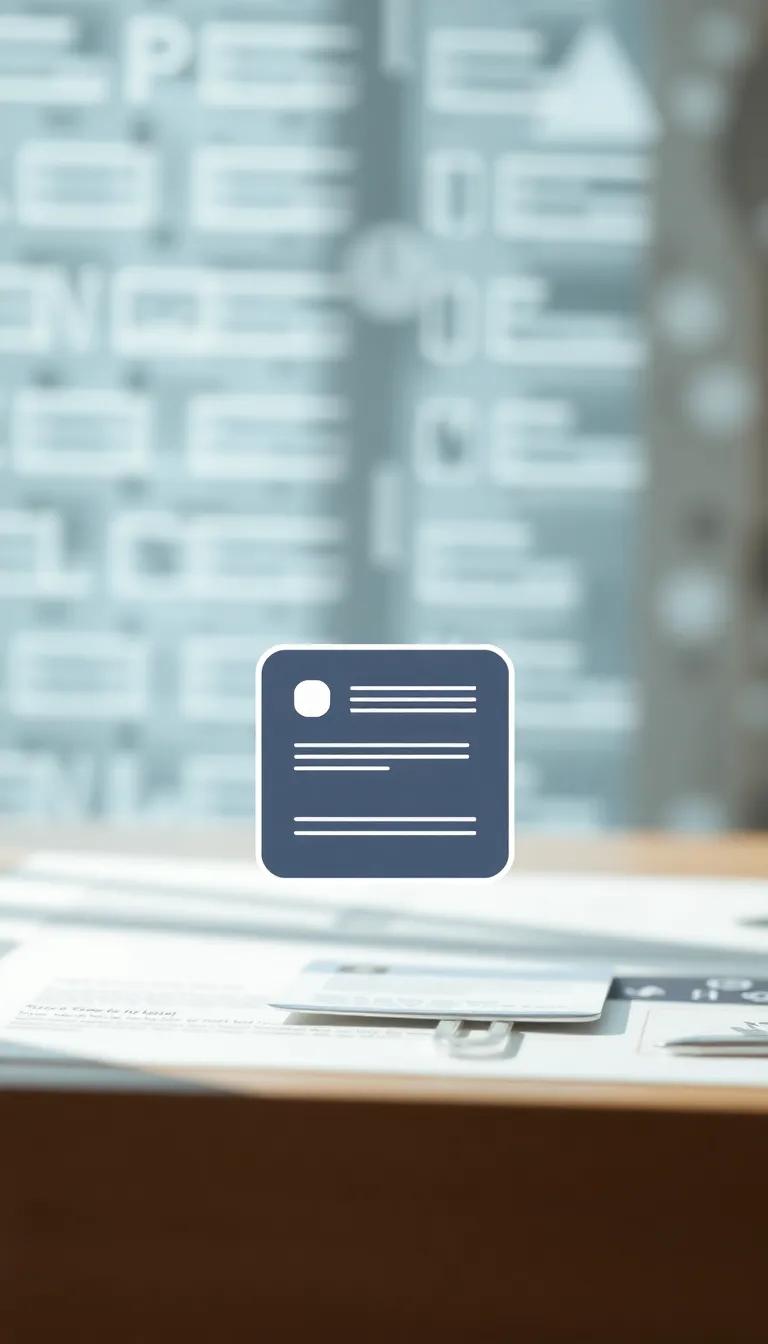Introduction
In an age where instantaneous communication defines the success of online businesses, integrating a free chat widget on your website can dramatically improve customer engagement. This guide delves into the importance of chat widgets, their design elements, and how they can transform user experience. With stats showing that 79% of consumers prefer live chat for quick communication, understanding their capabilities could be the key to retaining customers.
A well-designed chat widget can personalize interactions, facilitate support, and collect valuable feedback in real-time. In the following sections, we will explore step-by-step techniques for designing a chat widget that not only enhances communication but also aligns with your brand’s identity. Let’s explore how to leverage this powerful tool to boost conversions and foster meaningful engagement with your customers.
Understanding Chat Widgets The Function and Importance of Chat Widgets in Modern Customer Service
Enhancing User Engagement with Chat Widgets
In the landscape of contemporary online customer service, chat widgets have emerged as vital tools for businesses aiming to improve their interaction with users. A chat widget is a small chat interface placed on a website or application that facilitates real-time communication between customers and support representatives. These widgets serve multiple roles, from answering inquiries to gathering customer feedback, all of which contribute to creating a seamless and positive user experience.
The importance of chat widgets lies in their ability to enhance customer service efficiency and user engagement. Firstly, they provide immediate assistance, allowing users to obtain answers to their questions without the lengthy delays often associated with email or phone support. This real-time interaction not only boosts customer satisfaction, but also significantly increases the likelihood of conversion, as customers are more inclined to make a purchase when they have immediate access to information.
Chat widgets play an integral role in reducing bounce rates on websites. When users arrive at a site and find it challenging to navigate or locate relevant information, they may leave without taking any action. A chat widget counters this issue by offering assistance proactively, encouraging users to engage rather than exit in frustration. By proactively addressing customer needs, businesses can foster a more engaging atmosphere.
The data gathered through chat widgets can provide insightful analytics for businesses. These insights can range from common inquiries to customer pain points, allowing organizations to refine their products, services, and overall website experience. A chat widget thus functions not only as a channel for communication but also as a source of valuable information to drive future improvements.
Chat widgets are essential components of modern customer service and engagement strategies. They provide instant access to support, contribute to higher conversion rates, reduce bounce rates, and generate vital user insights, cementing their place as indispensable tools for any business aiming to enhance its online customer experience.
Design Principles for Chat Widgets Maximize Engagement Through Effective Design
Understanding Key Design Principles
Creating an engaging chat widget requires careful consideration of various design principles to ensure a seamless user experience. A well-designed chat widget can significantly boost user interaction, leading to higher customer satisfaction and retention. The following key principles should be prioritized when designing your chat widget.
Simplicity and Clarity: The design should embody simplicity, incorporating a clean interface that is easy to navigate. Users should not struggle to find the chat option. Use clear and concise language for prompts, ensuring that users know how to initiate a conversation. Use familiar icons and buttons that engage users without overwhelming them.
Accessibility: Your chat widget should be accessible to all potential users, including those with disabilities. Ensure that the chat interface is compatible with assistive technologies and that text is readable. Consider color contrast, font size, and alternative text for images to cater to diverse user needs.
Responsive Design: A chat widget must be functional across a variety of devices and screen sizes, including desktops, tablets, and smartphones. The layout should adapt effortlessly, providing a consistent experience regardless of how it is accessed, ensuring user interaction remains fluid and intuitive.
Customization: Customization options allow businesses to align chat widgets with their brand identity. Colors, fonts, and images should reflect your brand while maintaining usability. This fosters a sense of trust and familiarity, making customers feel comfortable engaging with your business through these platforms.
Proactive Engagement: Incorporating features that prompt proactive user engagement can elevate the user experience. Consider implementing greeting messages or offering assistance based on user behavior, such as time spent on a page or visits to specific product categories. This shows that you value their experience and are eager to assist.
Feedback Mechanism: Allow for user feedback through rating systems or surveys within the chat widget. Gathering insights into user satisfaction helps identify any areas for improvement, enabling continuous enhancement of the chat experience to better serve your audience.
By adhering to these design principles, your chat widget can become a powerful tool for fostering engagement and improving customer interaction. A thoughtful approach to design not only enhances user experience but also supports the broader goal of enriching customer relationships through effective communication.
Features to Include in Your Free Chat Widget for Maximal Engagement
Core Features for Effective Interaction
To optimize customer engagement through your chat widget, certain fundamental features should be integrated. These elements not only improve user experience but also facilitate smoother communication between businesses and their clients. Understanding these essential features can be a game changer in how effectively your chat widget works.
One critical feature is real-time messaging. Customers expect immediate responses to their inquiries, making it vital for your chat widget to support live interaction. This feature should enable chat agents to respond without lag, ensuring a seamless dialogue that respects the user’s time and urgency. Implementing typing indicators enhances transparency, allowing customers to see when an agent is preparing a reply, which reduces feelings of uncertainty during the interaction.
Offering a customizable pre-chat form is another necessary element. This form allows customers to submit their name, email, and the nature of their inquiry before the chat begins. This information helps agents prepare for the conversation, enhancing the interaction from the outset. It also enables businesses to gather initial insights about customer needs and preferences, aiding in future interactions.
Advanced Functionalities for Enhanced Engagement
Beyond these basic features, advanced functionalities can further enhance the effectiveness of your chat widget. Proactive chat invitations can be employed to engage visitors actively. For example, if a user spends a certain amount of time on a page, the chat widget can prompt them with a message offering assistance. This makes the customer feel looked after and can significantly improve conversation initiation rates.
Another beneficial feature is chat history. Allowing customers to review past conversations can foster trust and provide context for your support agents. This feature also helps in crafting responses based on previously established communication, making interactions more personalized and relevant.
AI-powered chatbots can provide 24/7 customer service capabilities. These bots can handle basic inquiries and route more complex issues to human agents, ensuring that customers receive assistance at any hour. When designed well, chatbots can operate with a friendly tone, mimicking human-like interactions that elevate customer satisfaction.
These features form the backbone of an effective chat widget, promoting greater engagement and a positive customer experience. By prioritizing these functionalities, businesses can leverage chat widgets as strategic tools to facilitate better interactions with customers.
Customization for Better Engagement Personalizing Your Free Chat Widget
In the quest to maximize engagement and foster meaningful customer interaction, customization options for chat widgets emerge as a vital strategy. By allowing companies to tailor the appearance and functionality of their chat interface, brands can create a more relatable and unique experience for their users. This chapter highlights how strategic customization contributes to a more personalized customer journey.
Understanding the Importance of Personalization
The modern consumer is driven by a need for connections that resonate on a personal level. A chat widget that reflects a brand’s identity while also addressing the specific needs of customers can significantly enhance user engagement. Customization offers businesses a chance to integrate their branding elements, such as colors, logos, and fonts, to create a familiar environment for users. This alignment not only enhances recognition but can also instill trust which is crucial for encouraging interaction.
Customizing the Widget’s Appearance
When designing a chat widget, visual appeal is fundamental. Here are some aspects of appearance that can be adjusted:
- Brand Colors: Choosing colors that align with the company’s aesthetic helps in creating consistent branding.
- Fonts and Text Styles: Customized fonts contribute to readability and match the overall tone of the brand.
- Button Shapes and Sizes: Identifying optimal button designs fosters easier navigation and user engagement.
- Background Images: Utilizing engaging backgrounds can create a dynamic interaction experience, making it more inviting.
These visual customizations appeal to the aesthetic preferences of users, often increasing their willingness to engage with the chat feature.
Functional Customizations for Enhanced Interaction
Beyond aesthetics, functional elements also play a critical role in user experience. Here are a few ways to customize functionalities:
- Greeting Messages: Personalized greetings based on user data (like location or previous interactions) can initiate conversations that feel more relevant.
- Quick Reply Options: Providing tailored quick response buttons can enable faster interactions, reducing the friction in communication.
- Chatbot Personalization: Customizing the chatbot’s tone and style to match brand voice ensures consistency across customer touchpoints.
By implementing these functional enhancements, businesses can drive engagement through meaningful interactions that cater to individual user preferences, fostering a sense of connection that is essential for loyalty.
Customization of chat widgets can dramatically elevate customer interactions by crafting a more personalized experience. When these elements are thoughtfully integrated into the chat widget’s design, businesses can not only attract users but can also cultivate long-lasting relationships with them.
Integrating AI and Automation Enhance Chat Widget Functionality and Customer Interaction
AI-Powered Features for Enhanced Customer Engagement
Incorporating artificial intelligence (AI) in your free chat widget can significantly elevate the customer interaction experience. AI technologies, such as Natural Language Processing (NLP) and machine learning algorithms, offer the ability to understand and respond to customer inquiries more effectively. This integration facilitates not only instantaneous responses but also contextually relevant engagement, thereby enhancing the user’s journey.
For example, chat widgets employing AI can analyze user behavior and preferences in real time. By learning from previous interactions, AI can tailor responses based on individual customer needs. This level of personalization fosters a deeper connection and increases overall satisfaction. Furthermore, a well-designed AI chat feature can handle multiple queries simultaneously, ensuring that no customer feels neglected during peak hours.
Automating Responses to Improve Efficiency
Automation plays a vital role alongside AI in managing customer inquiries. By implementing automated response systems, businesses can ensure that common questions receive immediate attention. These automated replies can address frequently asked questions, minimizing wait times and providing users with the information they need right when they need it.
- Automated greetings can make users feel welcomed as soon as they opt for assistance.
- Pre-set responses to common issues can streamline the resolution process.
- Escalation protocols can be automated to forward complex inquiries to human agents swiftly.
Such automation also allows human agents to focus on more complicated customer scenarios, leading to improved service quality. The combination of AI and automation ensures that chat widgets operate smoothly, helping businesses maintain a high level of engagement without compromising service quality.
Insights gained from automated interactions can inform future AI adjustments, enhancing the system’s capability to provide accurate and relevant responses continuously. By monitoring these interactions, businesses can refine their approaches, leading to more effective communication and overall improvements in customer service.
Integrating AI and automation into your chat widget not only maximizes engagement but also sets the stage for a more efficient and satisfying customer experience. As businesses gear up for comprehensive implementations, these elements will be fundamental in establishing lasting relationships with customers.
Testing Your Chat Widget Ensure Optimal Engagement Through Rigorous Evaluation
Understanding the Importance of Testing
Testing your chat widget is an integral step that directly influences its effectiveness in maximizing customer engagement. Prior to full deployment, thorough assessment ensures that the widget functions seamlessly and meets user expectations. A well-tested chat widget can significantly enhance user experience, reducing the likelihood of technical issues that might hinder communication. When users encounter malfunctions or slow responses, their engagement can wane, leading to lost opportunities. Therefore, it becomes crucial to assess various components such as user interface, load times, and responsiveness.
Methods for Effective Testing
Several methodologies can be employed to thoroughly evaluate the functionalities of your chat widget. The following are key approaches:
- User Experience Testing: Involve real users from your target demographic to interact with the chat widget. Gather feedback on ease of use, navigation, and overall experience. Their insights can guide improvements and adjustments.
- Load Testing: Simulate high-traffic scenarios to ensure your chat widget can handle multiple simultaneous interactions without lagging. This is particularly important for businesses anticipating spikes in customer inquiries.
- Performance Testing: Assess the widget’s responsiveness under various network conditions. By testing on slower networks, you can determine how well the widget performs in less-than-ideal scenarios, ensuring users remain engaged regardless of their connectivity.
- Functionality Testing: Verify that all features, from automated responses to integrations with customer relationship management software, operate correctly. Any glitches must be identified and rectified before launch.
- A/B Testing: Implement different versions of the chat widget to evaluate which one yields better engagement and user satisfaction. Monitor metrics such as user response rates and conversation completion rates to inform your design approach.
Post-testing, it is essential to review collected data and implement necessary adjustments. This iterative process of testing and refining is vital for achieving a chat widget that not only functions well but actively engages customers. By ensuring that your chat widget is user-friendly and problem-free before launch, you set the stage for fostering meaningful interactions that can lead to higher satisfaction and conversion rates.
Monitoring and Optimizing Engagement Strategies for Enhanced Chat Interactions
Engagement through a chat widget can yield significant benefits, but realizing its full potential requires a systematic approach to monitoring and optimizing chat interactions. Understanding user behavior and feedback can empower businesses to fine-tune their chat functionalities continually. Effective monitoring begins with establishing clear metrics for success, focusing on key performance indicators (KPIs) that shape engagement strategy.
Establishing Key Performance Indicators
To effectively monitor chat interactions, you should first determine the KPIs that matter most. Common indicators include:
- Response time: Measuring how quickly your team responds to inquiries can reveal customer service efficiency.
- Conversation duration: Understanding how long chats last helps gauge customer interest and engagement.
- Customer satisfaction score: Utilizing post-chat surveys enables a direct assessment of user satisfaction.
- Engagement rate: Tracking the number of initiated conversations relative to total website visitors provides insights into how well the chat widget captures visitor attention.
By employing analytics tools, you can collect and analyze data that informs these KPIs. Integrating systems that track chat interactions alongside other user engagement metrics will illuminate patterns in customer behavior, allowing for more targeted optimization efforts.
Continuous Improvement through Feedback
Collecting qualitative feedback directly from users can also be invaluable. Post-chat surveys give customers a platform to express their thoughts on the chat experience, revealing potential areas for enhancement. Pay attention to the common themes that arise in these surveys; they may point to inconsistent agent performance, unclear messaging, or even technical glitches within the chat widget.
Consider conducting regular performance reviews with your chat agents. Gathering feedback from frontline employees who interact with the chat widget daily can yield insights on recurring issues or inefficiencies, allowing management to make informed adjustments.
Experimenting with different chat elements can improve engagement. A/B testing various components like greeting messages, button placements, or the overall chat flow will help ascertain what resonates best with your audience. By iterating based on collected data and direct feedback, you can optimize your chat widget constantly, ensuring that it not only meets but exceeds customer expectations.
Best Practices for Using Chat Widgets Maximize Engagement with a Free Chat Widget
Optimizing Chat Widget Design for Enhanced Interaction
To effectively engage customers through chat widgets, the design and functionality must prioritize user experience. First, simplicity is vital. A cluttered interface can overwhelm visitors, leading them to abandon the chat option altogether. Offer a clean layout with intuitive icons and clear labels. Use contrasting colors for buttons to draw attention, ensuring they stand out against the background. This approach not only enhances visibility but also encourages users to reach out.
Another best practice is to ensure mobile responsiveness. A significant portion of web traffic originates from mobile devices, making it essential that chat widgets function seamlessly on various screen sizes. Test your widget on different devices to ascertain that text is legible, buttons are easily clickable, and the overall experience remains pleasant regardless of the user’s access point.
Timing and Personalization
Timing plays an instrumental role in maximizing engagement. Implement proactive chat invitations that appear after a user has spent a certain amount of time on a specific page or has demonstrated signs of interest, such as scrolling. This method creates an opportunity for a more personalized interaction by allowing the chat widget to highlight relevant services or assist users based on their behavior.
Personalization further amplifies interaction. Use visitor data to tailor conversations, addressing returning customers by their name or referencing previous interactions. Incorporate AI-driven chatbots that can manage initial queries while collecting user preferences. This strategy not only fosters engagement but also ensures that human agents can focus on more complex inquiries, creating a smoother overall experience for everyone.
Ensure that customer support is readily available. Clearly communicate the hours of operation and expected response times. When users feel reassured that their queries will be promptly addressed, they are more likely to engage. Provide a smooth transition from chatbot to human assistance for more nuanced conversations, ensuring a seamless experience as users navigate both automated and personalized support.
Conclusions
Incorporating a free chat widget into your website design is an effective strategy to engage customers and streamline communication. Throughout this guide, we explored the essential elements of an engaging chat widget, from visual design to functionality. By personalizing interactions and providing real-time support, businesses can cultivate a strong relationship with their audience.
The success of your online presence hinges on how well you communicate with your customers. By adopting the insights shared in this guide and continually refining your chat widget design, you can significantly enhance user experience and maximize engagement. Embrace this opportunity to transform your customer interactions and drive your business forward.


